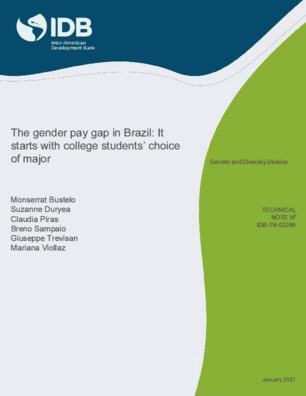The Gender Pay Gap in Brazil: It Starts with College Students' Choice of Major
Date
Jan 2021
We herein discuss how college major choice affects gender wage gaps by highlighting the role that STEM majors play in explaining the gender wage gap in a developing country. We focus on a Latin American country where a systematic analysis of the interaction between students choice of college major and the gender wage gap is currently lacking. We take advantage of a very unique dataset of college students from the Universidade Federal de Pernambuco (UFPE), Brazil, to decompose the raw gender gap in hourly wages into one component that can be explained by differences in endowments between men and women as well as a second or residual component that reflects gender differences in the prices of market skills. We implement the commonly applied decomposition approach at the wage distributions mean and a decomposition procedure that considers variations across the wage distribution. Our results reveal that the majors that women and men select explain 50% of the gender wage gap at the mean, and STEM majors contribute to 30% of this difference. When examining different percentiles of the wage distribution, we find that the selection of a major is more important at the middle of the distribution than at the bottom or top.




